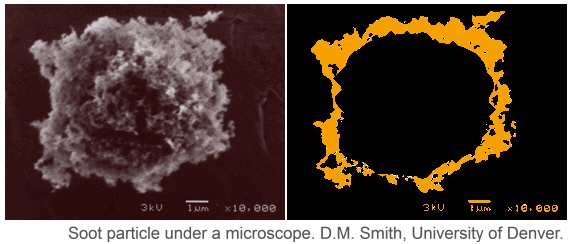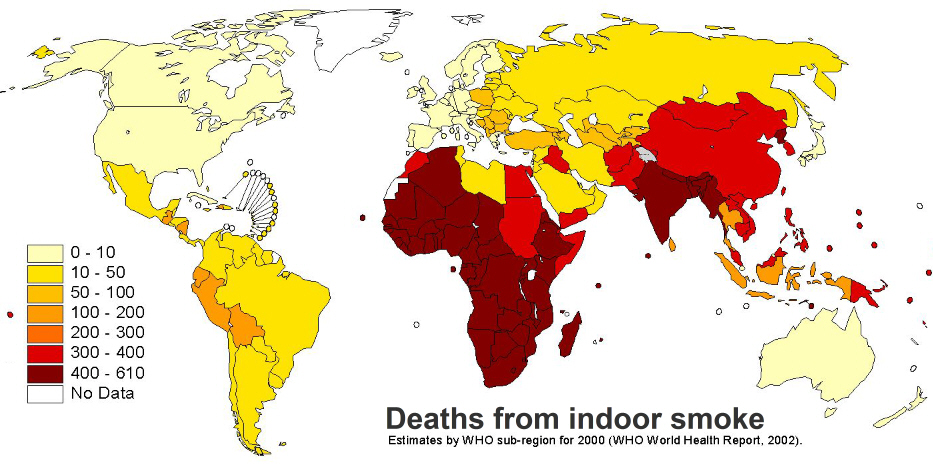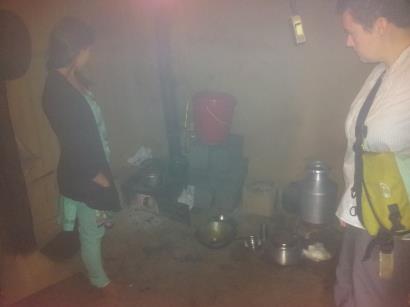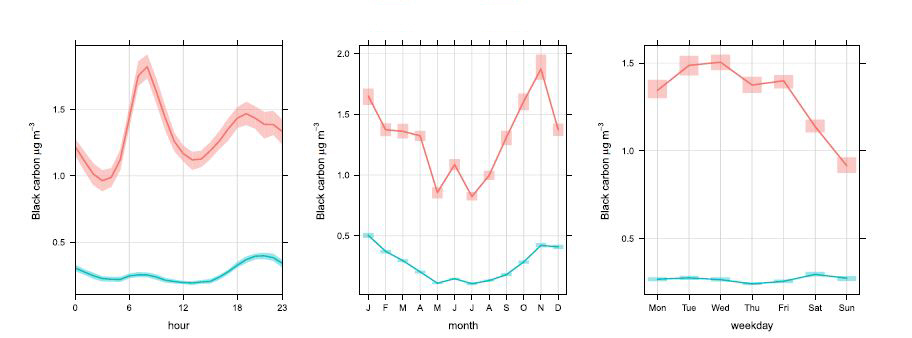

|
|
|
|
SMOKE For information about which fuels smoke: Solid Fuels Page. How to burn wood with low smoke: Smoke Advice Leaflet What smoke is, and how to spot it Smoke is a suspension of tiny solid particles in a gas. It is important to differentiate between 'white' and 'dark' smoke. White 'smoke' is usually harmless tiny water droplets formed when steam condenses in cool air, it is more common in colder weather, easily visible against a dark background, but difficult to see against a light sky background. Dark smoke is mainly black carbon and often harmful, it is visible against a light sky but difficult to see at night or against a dark background.  How smoke is generated. When solid fuels become hot, volatile matter - water or tars - inside the fuel element boils, giving rise to a myriad of sudden tiny explosions which shatter the solid material around them, throwing off tiny fast-moving particles which don't get time to burn properly. The smallest of these particles, below about 10 microns (micron = one thousandth of a millimetre), can get into the lungs. The bulk of smoke particles are pure soot - black elemental carbon - and are relatively harmless, the problem is the half-cooked residues which are left stuck to the particles, seen as a fuzzy coating in the photograph below. The residue from wood is almost all hydrocarbons, which if burned hot enough in a carefully designed stove fired with good fuel, can be broken down into harmless substances. Coal and oil smoke is more of a problem as it often contains sulphur and other compounds which simply cannot be destroyed.  Smoke in developing countries In many countries a combination of poor combustion on indoor hearths leads to a very poisonous type of smoke, plus lack of chimneys and ventilation means it is inhaled directly, may contribute to around 1.6 million deaths each year, mostly of children under five. (see: World Health Organisation)   A domestic kitchen in rural Nepal, 2013 Image: Glyn Hughes/Soliftec The variability of smoke Smoke is hugely variable and very difficult to measure. Differentiating between different types or more- or less- harmful smoke is impossible without very advanced facilities. It is therefore extremely difficult to compare one smoke source with another different type. The table below gives 'official' emission figures for various vehicles and types of heating, from which it is perfectly possible to show that, in terms of smoke, 1 stove = 6 cars, or 6 cars = 1 stove. Smoke is wildly variable and one poorly-used stove or one badly-tuned truck can have a huge impact. Net CO2 emissions are less uncertain, from which it is possible to present the following..
Sources: CO2 Emissions: https://www.gov.uk/..greenhouse-gas-reporting-conversion-factors-2019 Non-exhaust road dust: https://uk-air.defra.gov.uk/assets/ ..Non_Exhaust_Emissions_typeset_Final.pdf Barbecues, etc. There is no data for these appliances - assumed to be c3g PM per kg based on analysis of 'three stone' fireplaces Heating levels are limit levels in EN Standards Electric car is based on Nissan Leaf Dust emission from vehicles: https://en.wikipedia.org/wiki/European_emission_standards EXAMPLE DATA: One way of trying to identify wood smoke is to look for traces of levoglucosan, a type of caramel formed when plant material is partly burned. However 'LG' is also produced from coal, cooking, bio-diesel and other sources. This graph shows av. smoke; the blue line is levoglucosan from 'domestic' smoke from wood, but likely also from coal and cooking, the red line is other forms of smoke. (Measured at Kensington, London) https://kclpure.kcl.ac.uk/portal/files/12227807/Atmospheric_Environment.pdf   See also: Ringelmann Smoke Chart |
|
MORE FROM Soliftec... Home ● Fuel Costs ● Installation ● Library ● About ● Air Supply ● Blogspot ● Building Rules ● Carbon Monoxide ● CE Marking ● Dictionary ● Efficiency ● Electricity - CHP ● Embodied Energy ● Fascinating Facts ● Fireplace Doctor ● Fuel Properties ● Heat Need ● Heroes ● Legislation ● Manufacturers ● Open Fires ● Ringelmann Scale ● Smog and Smoke Control ● Smoke ● Solid Fuels ● Standards ● Statistics ● Stove History ● Tables, Data and Formulas ● Test Laboratories ● Thatched Roofs ● The Carbon Cycle ● The Chimney Effect ● Wood Fuel ● Email: info@soliftec.com COPYRIGHT and ALL RIGHTS RESERVED: © BUILT WITH WHIMBERRY matrixstats |